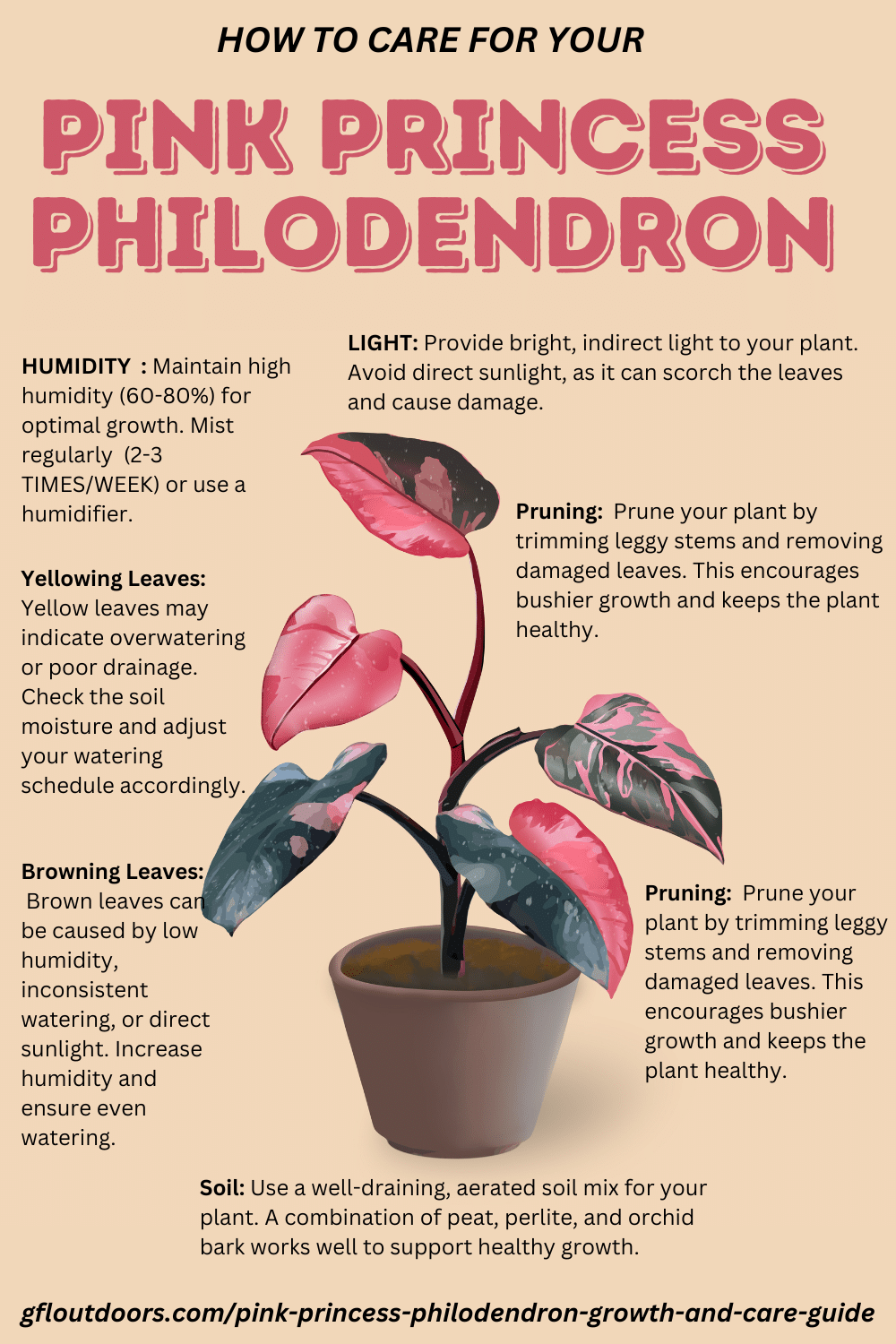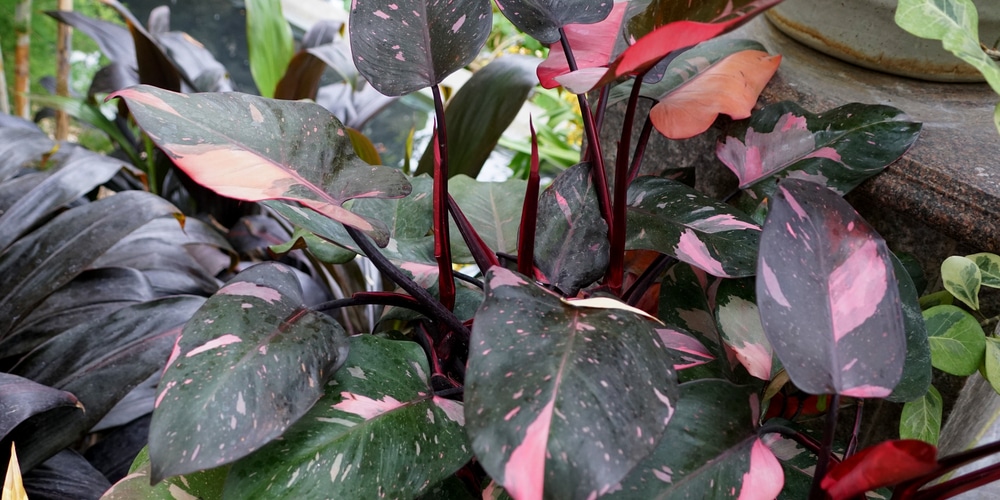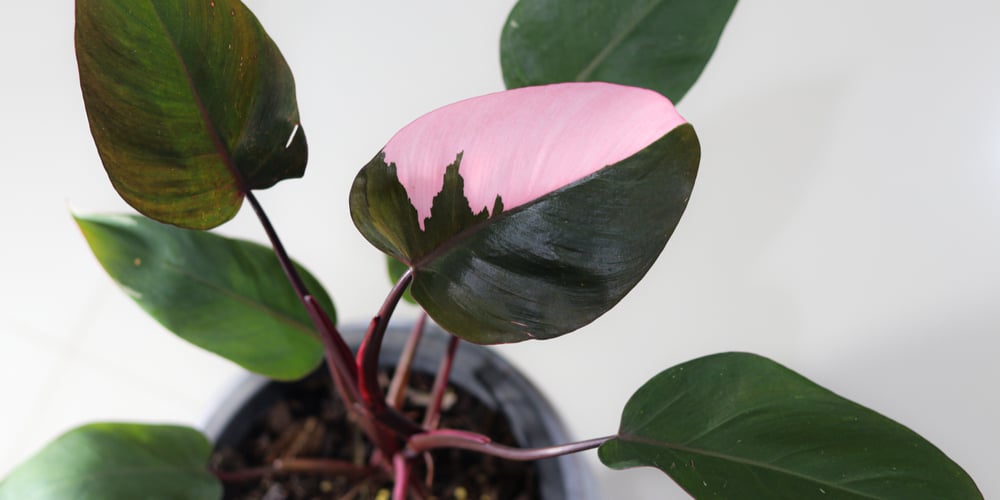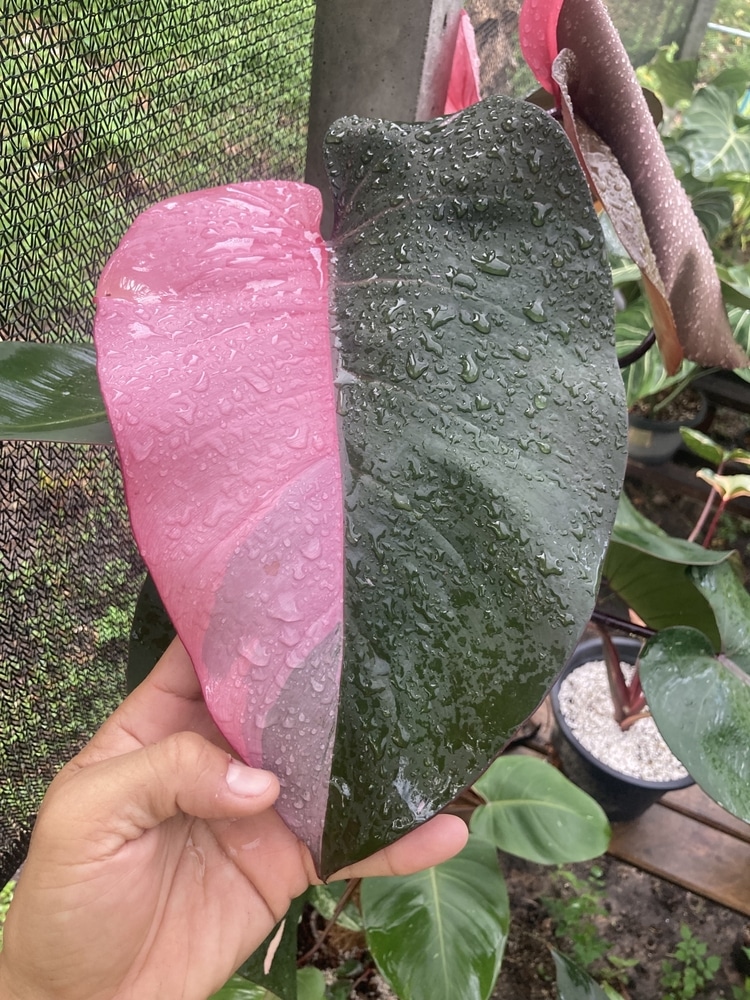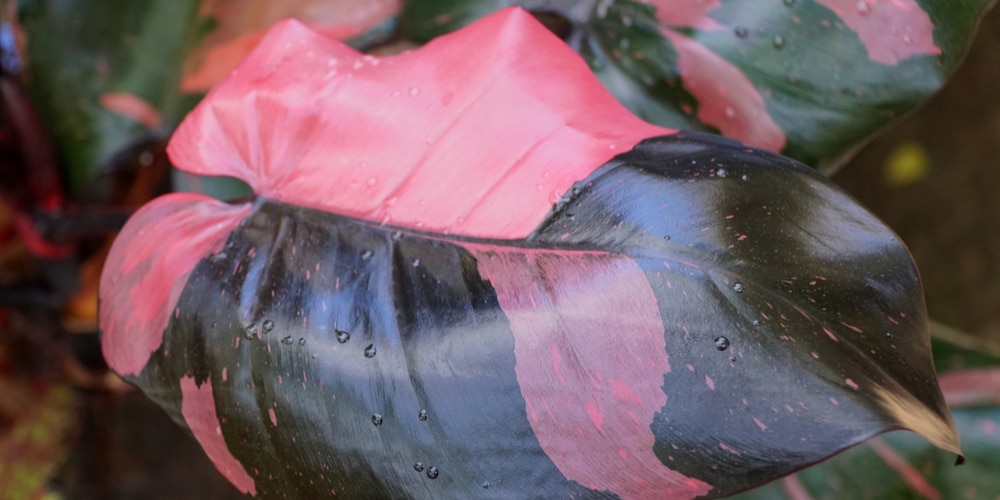Pink princess philodendrons are one of the most beautiful house plants available.
They are relatively rare as they are slow-growing, and some plants don’t have the pink variegated look, which is highly sought after.
This unique plant has heart-shaped foliage that gives a tropical look to any room.
Its leaves are beautiful and glossy with interesting markings. No two plants ever look exactly the same. Let’s look at how to grow and care for this one-of-a-kind houseplant.
What is a Pink Princess Philodendron
The Pink princess philodendron is a beautiful houseplant that’s a hybrid variety, developed in Florida during the ’70s. The plant was grown across America for decades without attracting much attention but in 2020 became more popular due to social media.
These plants are now highly sought after and relatively rare, they fetch high prices, and often fake imitations are sold. Beware of scams if you’re looking to buy a pink princess philodendron as some sellers die other varieties of philodendron’s pink to charge a higher price.
Like all Philodendrons, the pink princess is toxic to humans and animals if ingested. It should be kept away from young children and pets. The plant’s foliage produces a crystalline substance that can cause skin irritation, so you need to be careful when handling these plants.
How to Care for a Pink Princess Philodendron
Pink Princess Philodendrons have pink streaks on their foliage as the pink sections don’t contain chlorophyll. This means that they are unable to absorb the light they need to grow and turn green.
In order to thrive, the plant needs to have variegated foliage, with green and pink. Leaves that are mostly pink will eventually turn brown and drop off as they won’t be absorbing the light they need.
To care for a Pink Princess Philodendron correctly, you’ll need to get the light requirements right. Here are some tips to help you grow and care for a thriving pink princess plant:
Light
Pink princess philodendrons should be kept in bright indirect light. Light is essential for their growth, and incorrect lighting will affect the coloration of your plant. It’s best to place your plant near either an east or west window. Be careful not to leave your plant in direct sunlight as the foliage will burn. Incorrect lighting can also turn the leaves completely green, so you may need a growing light if your home doesn’t get enough natural sunlight.
Watering Requirements
The Pink Princess Philodendron is a tropical plant and should be left to dry out a bit before watering. Allow an inch of the topsoil to between watering. It’s a good idea to get into the habit of checking the soil before watering. Most people find that their pink princess plant needs to be watered twice a week during the growing season.
Be careful not to let your plant dry out completely and don’t overwater. Overwatering a Pink princess can lead to root rot which will kill your plant. Root rot is especially or common in Philodendrons and is caused by either overwatering or insufficient soil drainage. Don’t drench your plant or let its root sit in water.
Soil
Pink princess Philodendrons should be planted in soil that’s loose and well-draining. A loose soil helps with aeration and also improves the plant’s health. You can use a good quality houseplant soil and mix in some perlite or sphagnum moss. This will help with drainage.
Pink Princess Philodendrons can be repotted once every year or two. It’s best to report your plant in the spring or summer. When repotting, only use a pot one size bigger and add a layer of gravel or stones to the bottom to help improve drainage.
Temperature
Pink Princess Philodendron can thrive in the average home environment where temperatures are between 65F and 85F. These plants can also cope with a slightly lower nighttime temperature of 60F.
You’ll need to protect your plant from the cold in winter. Keep your pink princess away from cold drafts as these plants are very sensitive. Don’t make the mistake of placing your plant next to a heater, as this will dry out the leaves. In summer, ensure your plant isn’t getting a draft from your air conditioning system.
Humidity
Pink princess philodendrons like high humidity and require regular daily misting to help keep their leaves healthy. Use a bottle that produces a fine spray and mist your plant in the morning. This will mean that the water will evaporate throughout the day. Be careful not to drench your plant’s leaves, or they may become rotten.
Alternatively, you can place a tray filled with pebbles and water under your plant. If you have more than one tropical plant, grouping them together will also improve humidity.
Fertilizer
You can feed your plant with a good quality houseplant fertilizer that’s been formulated especially for tropical plants. It’s a wise idea to give your plant fertilizer monthly throughout the growing season. Your plant won’t need to be fertilized in the winter as its growth will slow down.
Pruning
You may need to trim your plant slightly as it gets larger. Prune with a clean, sharp knife or scissors. Pruning will help keep your plant the desired shape and size as philodendrons can grow very large. Pruning can help encourage variegated foliage to grow. When trimming your plant, cut just below the leaf node. You can also cut off any leaves that are dead, damaged, or dying.
Pests
The Pink Princess Philodendron is fairly pest resistant but can be affected by aphids and mealybugs. If you notice any sign of insects, you can use an insecticidal spray to kill the bugs. It’s a good idea to check for insects regularly, paying particular attention to the underside of leaves. You can wipe the leaves with a damp cloth to get rid of pests.
Conclusion
Pink Princess Philodendron is a beautiful plant that has dark green and pink foliage. These plants are quite rare and, as a result, are expensive, and there are scams where sellers are dying other types of philodendron’s pink.
This tropical plant requires bright indirect sunlight, regular watering, and fertilizer once a month throughout the growing season.
Last update on 2025-06-06 / Affiliate links / Images from Amazon Product Advertising API
